|
28 October 2025
|
|
|
മലയാളം
|
|
|
|
|
|
Agriculture >
Plantation Crops > Tea (Camellia sinensis)
|
|
|
|
Crop Management
|
|
|
|
Plant protection
Pests
Nematodes
(Meloidogyne spp.)
|
Symptoms
- Infests young nursery plants
- Infected roots develop galls or knots
-
Shows symptoms of nutrient deficiency and stunted growth
- Roots penetrated by
the infective juveniles and migrate through the cortex to the xylem
- On entry
to the root, gall formation induced
- Females characterized by the narrow movable
head and enlarged posterior
- Eggs found in the sac like posterior and liberated
into the soil
|
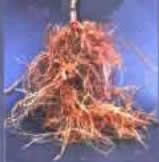
|
|
Control measures
Nursery
Heat treatment: Spread soil sand mixture (5 cm thick)
on a G.I. sheet. Heat it from below. Sprinkle water periodically. Mix the soil thoroughly
by turning. Optimum temperature is 60-65ºC. Soil should not be too hot to hold
in the hand. Over heating of soil will lead to manganese toxicity.
Mature tea
Neem cake 2 kg per bush is recommended.
|
Insects
White / cockchafer grubs
(Holotrichia sp.)

The creamy white grub eats away the roots. The main symptoms are ring barking of
stem, chlorosis and defoliation. The pest is a serious problem in areas where un-decomposed
farmyard manure is used.
Control
Nursery: Heat treatment
of soil and use of granular insecticides are practised.
New clearing: Drench Chlorpyriphos or quinalphos 0.05%
- At the time of planting: 500 ml per pit.
- Post-planting treatment: Loosen
the soil around the bush and pour one litre per bush.
Root mealy bug (Dysmicoccus
sp.)
The pest is a problem in the nursery. It sucks sap from the callusing region, mother
leaf petiole and axillary buds. This arrests root development; leads to mother-leaf
fall and finally death of plant.
Stem borers
Red coffee
borer (Zeuzera coffeae)
Mostly seen in new clearings as batches. Young stems are bored and larvae tunnel
downward, make holes at intervals to eject excreta and wood particles. Frass and
excreta are seen around plants. Alternate host of the pest is coffee and cocoa.
Large
hepialid borer (Sahyadrassus malabaricus)
This is a polyphagous pest attacking teak, eucalyptus and lantana. Thick branches
(3 cm diameter) are preferred by the pest. Callus tissue and wood form food for
larvae. Entrance holes are covered with frassy mat formed with chewed wood and silk.
Control
Cut the affected stem and pour quinalphos using ink filler. Then the holes are plugged
with clay paste.
Mites
Several species of mites attack tea plants. They are dry weather pests mostly attacking
mature foliage except pink and yellow mites.
|
Pink mite (Acaphylla theae)
- During early stages of attack leaves turn pale and curl upwards
- Severe infestation leads to brownish discolouration
- Attack tender flush, assam jat and assam hybrids more susceptible
|
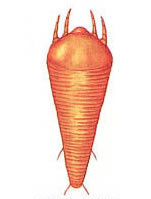
|
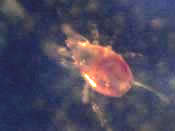
|
- Eggs shiny, globular, laid singly on the under surface of the leavesHatches in 2-3
days, two nymphal stages, white in colour
- Population build up starts in November / December
- Attains peak in February / March, decline during May/June
- Life cycle completed in 6-9 days
|
The scarlet mite(Brevipalpus
australis)
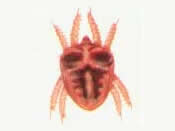
|
- Feeding leads to brown discolouration of leaves
- Symptoms of attack first appear on either side of the midrib and gradually spread
to the entire leaf
- Severe infestation leads to defoliation
- Adult mite is scarlet red in colour and obovate in shape
|
- Reproduction is by parthenogenesis
- Eggs are bright red, elliptical, laid in clusters
- Incubation period is 7-10 days
- Each developmental stage is followed by a quiescent stage
- Life cycle completed in 30-36 days
|
The Red spider mite
(Oligonychus coffeae)
- Infestation starts along midrib and veins
|
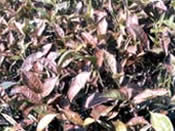
|
- Spreads to the entire upper surface of leaves matured
- Infested fields distinct even from a distance
- Severe infestation leads to defoliation
- Mites spin a web of silken threads on the leaf
|
|
|
Control
If infestation is more, quinalphos will be effective. The biocontrol fungi Paecilomyces
fumosoroseus is available as wettable powder formulation " Mycomite"
for control of red spider mite.
|
Tea Thrips:
Scirtothrips bispinosus
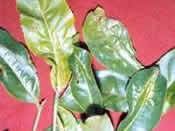
|
- Prefers young leaves and buds
- Continuous feeding causes lacerations which appear as streaks
- Leaf surface becomes uneven and curled
- Feeding marks on the buds later appear as two parallel lines
- Leaf margins turn yellow
|
- Leads to inordinate delay in tipping and consequent crop loss
- Prepupa and pupae are found in the leaf litter and soil
- Adults emerge from the pupae after 3-5 days
- Weak fliers, dispersal and migration is helped by wind
|
Control measures
- Cultural control
Monitoring the population in the field with yellow sticky traps
Maintenance of regular shade
- Biological control
Spray the spore suspension of the entomopathogen, Verticillium lecanii
@ 1.5 kg/ha in the evening hours when humidity is more
Allow predators (Anthocorids and predatory thrips )to build up
- Chemical control
Apply quinalphos 25 EC @ 750 ml/ha; dimethoate 20 EC @ 500 ml/ha; quinalphos 25
EC + dichlorvos 76 EC @ 750+250 ml/ha;
Spray should be targeted to the shoots on and below the plucking table, and also
the side
Tea mosquito
bug (Helopeltis theivora)
- Adults and nymphs punctures the plant tissues with needle like rostrum
- Suck the sap from buds,young leaves and tender stems
- Punctures appear as reddish brown spots
|
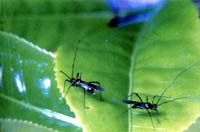
|
-
Shoots dry up and crop loss is near total
Adults black in colour, red thorax, black and white abdomen and greenish brown wings
- Active in early mornings and late evenings, more in moist shaded areas
- Seasonal prevalence largely dependent on weather factors
- Incidence of tea mosquito bug high during July–December and low during January-June
|
Control measures
- Cultural control
Monitoring the infestation level in the field
Black plucking, weed control
Removal of stalks containing eggs while plucking
- Biological control
Allow egg parasitoid (Erythmelus helopeltidis) to build up
- Chemical control
Apply quinalphos 25 EC @ 750 ml/ha; chlorpyrifos 20 EC @ 750 ml/ha; fenthion 80
EC @ 200 ml/ha; quinalphos 25 EC + dichlorvos 76 EC @ 750+250 ml/ha
Spray early mornings or evenings when these bugs are active
|
|
Top
|
|
Back to main page of tea
|
|
|
|
|
|